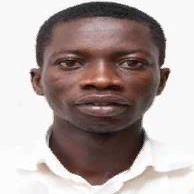International Journal of Wireless and Microwave Technologies (IJWMT)
IJWMT Vol. 12, No. 5, 8 Oct. 2022
Cover page and Table of Contents: PDF (size: 511KB)
Error Detection and Correction in Wireless Sensor Networks Using Enhanced Reverse Conversion Algorithm in Healthcare Delivery System
Full Text (PDF, 511KB), PP.43-52
Views: 0 Downloads: 0
Author(s)
Index Terms
Wireless Sensor Network, Residue Number System, Healthcare, Error detection, correction
Abstract
Wireless Sensor Network (WSN) is a group of sensors connected within a geographical area to communicate with each other through wireless media. Although WSN is very important in data collection in the world today, error may occur at any stage of data processing and transmission within WSNs due to its architecture. This study presents error detection and correction in WSNs using a proposed ‘pair wise’ Residue Number System (RNS) reverse converter in a health care delivery system. The proposed RNS reverse converter required (10n+3)_FAbit hardware resources for its implementation making it suitable for sensors. The proposed scheme outperformed Weighted Function and Base Extension algorithms and Field Programmable Analog Arrays using Kalman-filter algorithm schemes in terms of its hardware requirements.
Cite This Paper
Prince Modey, Dominic Asamoah, Stephen Opoku Oppong, Emmanuel Kwesi Baah, "Error Detection and Correction in Wireless Sensor Networks Using Enhanced Reverse Conversion Algorithm in Healthcare Delivery System", International Journal of Wireless and Microwave Technologies(IJWMT), Vol.12, No.5, pp. 43-52, 2022. DOI:10.5815/ijwmt.2022.05.05
Reference
[1]N. Habibi and M. R. Salehnamadi, “An improved RNS reverse converter in three-moduli set,” J. Comput. \& Robot., vol. 9, no. 2, pp. 27–32, 2016.
[2]S. A. Haque, M. Rahman, and S. M. Aziz, “Sensor anomaly detection in wireless sensor networks for healthcare,” Sensors (Switzerland), vol. 15, no. 4, pp. 8764–8786, Apr. 2015, doi: 10.3390/s150408764.
[3]M. Roshanzadeh and S. Saqaeeyan, “Error Detection & Correction in Wireless Sensor Networks By Using Residue Number Systems,” Int. J. Comput. Netw. Inf. Secur., vol. 4, no. 2, pp. 29–35, Mar. 2012, doi: 10.5815/ijcnis.2012.02.05.
[4]I. Abiodun Aremu and K. Alagbe Gbolagade, “Redundant Residue Number System Based Multiple Error Detection and Correction Using Chinese Remainder Theorem (CRT),” Softw. Eng. (Science Publ. Group), vol. 5, no. 5, p. 72, 2017, doi: 10.11648/j.se.20170505.12.
[5]B. Parhami, “RNS representations with redundant residues,” in Conference Record of the Asilomar Conference on Signals, Systems and Computers, 2001, vol. 2, pp. 1651–1655, doi: 10.1109/acssc.2001.987765.
[6]K. Navi, A. S. Molahosseini, and M. Esmaeildoust, “How to teach residue number system to computer scientists and engineers,” IEEE Trans. Educ., vol. 54, no. 1, pp. 156–163, Feb. 2011, doi: 10.1109/TE.2010.2048329.
[7]W. Wang, M. N. S. Swamy, and M. O. Ahmad, “A new architecture of RRNS error-correcting QC encoder/decoder and its FPGA implementation,” in Proceedings - IEEE International Symposium on Circuits and Systems, 2002, vol. 5, doi: 10.1109/iscas.2002.1010828.
[8]S. Abdul-Mumin, P. A., and M. I., “New Efficient Reverse Converters for 8n-bit Dynamic Range Moduli Set,” Int. J. Comput. Appl., vol. 161, no. 9, pp. 23–27, Mar. 2017, doi: 10.5120/ijca2017913243.
[9]E. K. Bankas, K. A. Gbolagade, and S. Dan Cotofana, “An effective New CRT based reverse converter for a novel moduli set {2 2n+1 - 1, 22n+1, 22n - 1},” in Proceedings of the International Conference on Application-Specific Systems, Architectures and Processors, Jun. 2013, pp. 142–146, doi: 10.1109/ASAP.2013.6567567.
[10]T. Olabanji Olatunde, K. A. Gbolagade, and Y. Abolaji, “Redundant residue number system based fault tolerant architecture over wireless network,” in CEUR Workshop Proceedings, 2016, vol. 1755, pp. 212–216.
[11]E. K. Bankas and K. A. Gbolagade, “New MRC Adder-Based Reverse Converter for the Moduli Set {2n, 22n+1 - 1, 22n+2 - 1},” Comput. J., vol. 58, no. 7, pp. 1566–1572, Oct. 2015, doi: 10.1093/comjnl/bxu089.
[12]L. Sousa, S. Antao, and R. Chaves, “On the Design of RNS Reverse Converters for the Four-Moduli Set{2 s + 1, 2n-1, 2n, 2n+1 + 1},” IEEE Trans. Very Large Scale Integr. Syst., vol. 21, no. 10, pp. 1945–1949, Oct. 2013, doi: 10.1109/TVLSI.2012.2219564.
[13]J. M. Hereford, “Fault-tolerant sensor systems using evolvable hardware,” IEEE Trans. Instrum. Meas., vol. 55, no. 3, pp. 846–853, Jun. 2006, doi: 10.1109/TIM.2006.873791.
[14]A. Afsheh and A. Mojoodi, “An improved reverse converter for moduli set (2n -1,2 n,2n +1),” in ISCIT 2010 - 2010 10th International Symposium on Communications and Information Technologies, 2010, pp. 928–933, doi: 10.1109/ISCIT.2010.5665122.
[15]A. S. Molahosseini, K. Navi, C. Dadkhah, O. Kavehei, and S. Timarchi, “Efficient reverse converter designs for the new 4-moduli sets {2 n-1, 2n, 2n + 1, 22n + 1-1} and {2n-1, 2n + 1, 22n, 22n +1} based on new CRTs,” IEEE Trans. Circuits Syst. I Regul. Pap., vol. 57, no. 4, pp. 823–835, Apr. 2010, doi: 10.1109/TCSI.2009.2026681.
[16]O. Salem, A. Guerassimov, A. Mehaoua, A. Marcus, and B. Furht, “Sensor fault and patient anomaly detection and classification in medical wireless sensor networks,” in IEEE International Conference on Communications, Jun. 2013, pp. 4373–4378, doi: 10.1109/ICC.2013.6655254.
[17]B. C. P. Lau, E. W. M. Ma, and T. W. S. Chow, “Probabilistic fault detector for Wireless Sensor Network,” Expert Syst. Appl., vol. 41, no. 8, pp. 3703–3711, Jun. 2014, doi: 10.1016/j.eswa.2013.11.034.



